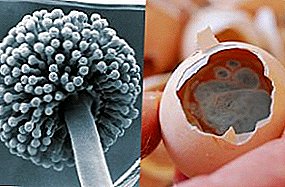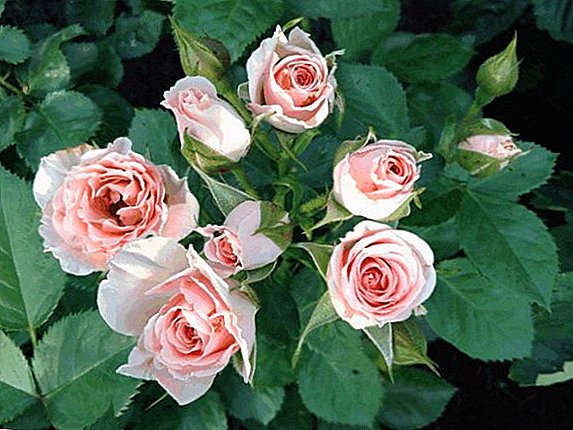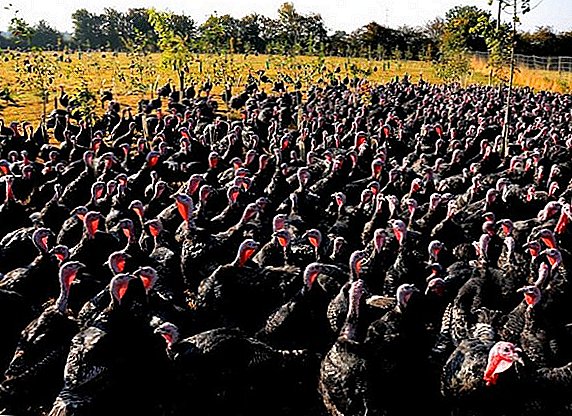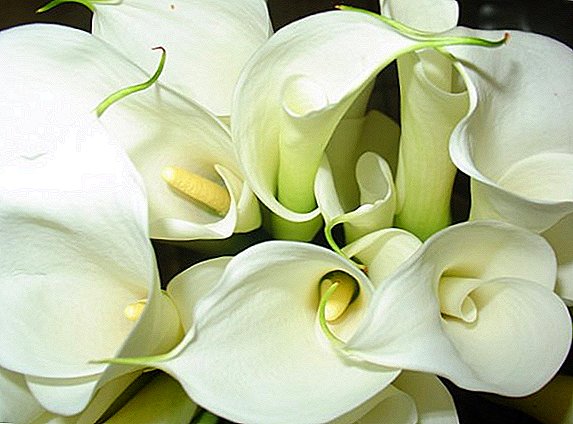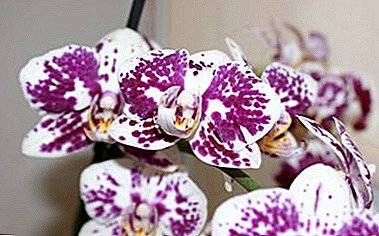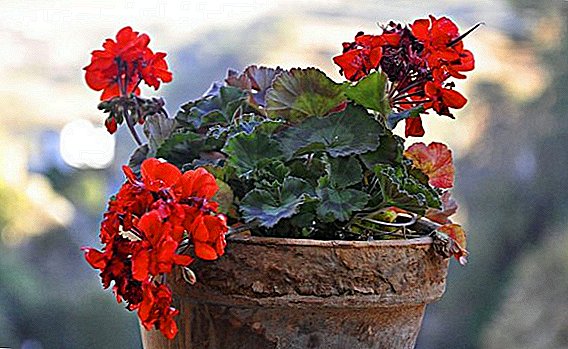 Geranium (Pelargonium) - a popular houseplant, which can be found on window sills in all climatic zones. Geranium bushes adorn the summer beds and plant trees on the streets.
Geranium (Pelargonium) - a popular houseplant, which can be found on window sills in all climatic zones. Geranium bushes adorn the summer beds and plant trees on the streets.
For the good development of this plant, it is important to pay attention to proper watering.
How to care for geraniums
Like many indoor flowers, geranium requires fertile, well-drained soil, as well as a significant amount of sunlight. Rich soil, composted and diluted with sand or perlite, creates excellent conditions for the development and flowering of geranium. As it grows and actively blooms for a long time, it quickly consumes nutrients and needs regular feeding.  Basic rules for the care of geraniums:
Basic rules for the care of geraniums:
- It must grow in a pot of porous material (clay, ceramics) in order to obtain the optimum air temperature and to carry out air exchange during growth.
- The flower grows better at night temperatures from +10 to + 15 ° С. It can survive at 0 ° C, if the ground is sufficiently dry, but it is better not to allow it.
- Between irrigation the soil should dry out.
- In winter, the plant needs to be watered less than in summer, but in such a way that the earthen ball does not dry out.
- During the growing season should be fertilized 1 time in 2 weeks. It is advisable to apply water-soluble formulations.
- To increase the density of the bush, you should pinch the growth points on the stems.
- Pruning of flowered peduncles enhances flowering.
- With the advent of new growth old leaves must be removed.
- If geranium spent the whole summer outdoors, install it so that it receives a lot of light.
- It is necessary to replant a flower in the spring to refresh the soil and renew its mineral composition.
Did you know? Homeland plants - South Africa, where more than 250 species of wild geranium still grow. The first copies of this flower appeared in Europe after the XVII century.
How to understand that it is time to water the plant
The year-round watering of the geranium is divided into 2 periods: during the growing season it is more intense, and in the winter - more rare. Watering frequency - 2-4 times a week.  Both the overmoistened and dried vases look almost the same: the lowered limp leaves turn yellow and fall off. After examining the soil, you need to water it with excessive dryness or stop watering, remove excess moisture and allow the geranium to dry well. You may need to remove the flower from the pot to inspect the root system for rot or pests.
Both the overmoistened and dried vases look almost the same: the lowered limp leaves turn yellow and fall off. After examining the soil, you need to water it with excessive dryness or stop watering, remove excess moisture and allow the geranium to dry well. You may need to remove the flower from the pot to inspect the root system for rot or pests.
How many times and how often to carry out the procedure
Geranium is a drought resistant plant. But despite this, the frequency of watering depends on the condition of the soil. An earthen ball should dry out between waterings - this improves the flowering process. Waterlogging is detrimental to the flower: if the roots do not dry out, they will not be able to get air and will be prone to rotting. The excess of moisture limits the access of nitrogen to the roots, which prevents the fertilizer from being absorbed, and the plant to develop. The intensity of irrigation depends on the air temperature and the season. In the summer, when the weather is hot, it is carried out daily, in autumn and spring - once every 2-4 days as the soil dries.
Read more about how to grow geraniums at home.
What water is better to water
Water temperature should be close to the air temperature at the time of irrigation. Cold is a source of stress for flowers: it cools the roots and can cause leaf curling and slow development.  It is recommended to carry out watering with hard water, because it is better absorbed. Soft water (after filtration) enhances the salt content of the soil and changes its acidity, which can reduce the ability to absorb nutrients.
It is recommended to carry out watering with hard water, because it is better absorbed. Soft water (after filtration) enhances the salt content of the soil and changes its acidity, which can reduce the ability to absorb nutrients.
Did you know? In fact, the “geranium” known to us is not a member of the family of the same name. Botanical geranium - This is a perennial shrub. And growing on the windowsill has the botanical name "pelargonium". Geranium it was called by ordinary Europeans in XVII century because of the similarity of new plants for them with the already known.
How to water a geranium at home: the main ways
Potted flowers consume liquid, lifting it from the ground to the leaves along with some minerals and carbon dioxide. Excess liquid evaporates through special pores on the leaves - stomata. Water provides all the internal processes in the cells, so without moisture, the geranium dies. It refers to plants that need constantly moist soil.
It is interesting to learn how to use geranium for medicinal purposes.
Basic rules for watering:
- pots must have drainage holes to prevent waterlogging;
- remove liquid that will drain into the pan after watering;
- Avoid dropping onto leaves and stems;
- Learn what type of water is suitable for your plant, paying attention to the condition of the flower before and after watering with different types of water.
 If a room flower is purchased at a store, it must be transplanted into a permanent pot with the “right” primer and watered. If a transplant is to be done, preliminary watering is needed in order to facilitate the removal of the plant from the pot. During the transplant, the new soil is also moistened.
If a room flower is purchased at a store, it must be transplanted into a permanent pot with the “right” primer and watered. If a transplant is to be done, preliminary watering is needed in order to facilitate the removal of the plant from the pot. During the transplant, the new soil is also moistened.Important! To find out if you need to water a geranium, try diving your finger into the ground. If you do not feel the moisture - so it's time to water.
Immersion
Dipping or watering from below is one of the most recommended ways to water. If there are drainage holes in the pot (and they should be there), then you should put it in a tray with water, leave for 20 minutes, then remove the pot and drain the water from the pan. This method is suitable for most plants.
The pots should not be allowed to stand in water for more than half an hour or so. This can cause root rot or infection by other pathogens that can damage the roots.
Watering from above
This method is used for all tropical plants, including geraniums. Do not forget that the purpose of watering is to moisten the ground. Therefore, you should water the geranium watering can. In order not to contribute to the occurrence of fungal diseases, do not apply water to the leaves.  Large pots and containers are usually watered from above to give the plants as much moisture as possible, and then their surplus is drained from the pan.
Large pots and containers are usually watered from above to give the plants as much moisture as possible, and then their surplus is drained from the pan.
Running water
Most gardeners use only warm tap water. This is explained by the fact that rainwater contains many impurities that can cause plant diseases.
But in areas with hard water tap does not suit those plants that need a sour soil. This fluid enhances the chlorine content in the soil, which is harmful to flowers. Therefore, in this case, it is better to water the geranium with settled running water.
Important! Tap water for irrigation needs to be defended so that the chlorine contained in it evaporates. It can cause diseases of the root system.
Spraying roots
To ensure the ingress of water directly to the roots, a drip irrigation system is used in the garden. In the room the same role is played by the tubular system, buried in the ground. The water in the tubules gradually seeps into the soil.
Is it possible to water the geranium
In addition to fertilizing fertilizers, tillage and improvement of root development with the help of fungicides and other folk remedies are also widely used. So, iodine and hydrogen peroxide provide antibacterial protection and improve the development of geranium.
Iodine
The use of iodine to provide antibacterial protection and improvement of indoor flower is one of the most effective methods of watering. To do this, use the solution: 2 drops of iodine in 1 liter of water.  Among the advantages of iodized water:
Among the advantages of iodized water:
- accelerating seed germination and plant development;
- suppression of the development of viruses and fungi;
- flower improvement.
- use only during the growing season;
- do not exceed the concentration of the solution in order to avoid sterilization of soil from beneficial microorganisms;
- Do not pour this solution on the plant itself.
Important! An excess of iodine is manifested in the form of intensive plant growth with simultaneous yellowing of flowers and leaves. To remove any substance from the soil, it is possible to water the plant abundantly, by flushing excess material into the pan.
Peroxide
Hydrogen peroxide is used for the same purposes as iodine: elimination of pathogens, protection of the plant root system from diseases. The solution is prepared from 2 tbsp. spoons of pharmacy hydrogen peroxide and 1 liter of water.  Terms of use:
Terms of use:
- Do not use simultaneously with another dressing.
- use no more than once a week, at any intensity of the irrigation schedule.
Boiled or boiled water
Water that is drawn from a water tap is characterized by its stiffness parameter. This percentage reflects the presence of magnesium and calcium salts. Tap water may also contain chlorine and fluoride, which are absorbed by plants.
We recommend to know how and when it is better to plant geraniums at home.
Boiling causes these substances to precipitate and makes the water softer. Approximately the same procedure is performed by filters: they purify water from mechanical impurities, replace magnesium and calcium ions with other, more useful ions. But soft water may contain too much salt.
The choice of what type of water to water a flower depends on the level of acidity required for it. In practice, you can water the plant and observe its reaction. If geranium slows growth, then water does not suit her.
Did you know? The leaves and flowers of aromatic varieties of geraniums are edible. Thanks to the essential oils contained in them, they are able to give not only a beautiful appearance, but also a wonderful aroma to meat dishes, salads and desserts.
Signs of improper watering
Irrigation of water is considered to be improper irrigation: wet soil and water in the pan are the main signs of this phenomenon. If the soil is moderately wet, but you observe deviations in development, then it can be:
- fading leaves;
- yellow or brown leaves;
- root rot.
 It is not at all difficult to organize the proper watering of the geranium. Basically, this procedure does not differ from watering other plants. Also do not forget to apply fertilizing correctly - and geranium will delight you with long flowering.
It is not at all difficult to organize the proper watering of the geranium. Basically, this procedure does not differ from watering other plants. Also do not forget to apply fertilizing correctly - and geranium will delight you with long flowering.

